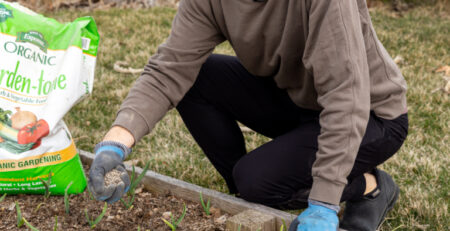Pest Guide: Gypsy Moth Caterpillars
With spring comes the arrival of spring pests. It’s an unfortunate trade-off for all of your hard work preparing the garden. One of the worst pests to face this spring is the gypsy moth caterpillar.

At 1 1/2″ to 2 1/2″ long at adulthood, these pesky chewers are distinguished by fuzzy grey bodies and red warts along their backs. They hatch in May and almost immediately begin climbing upwards into the leaves they feed on. Many of them spin long, silken threads that they use to drop down from foliage. The wind then helps carry them to new trees, where they continue to feed.
As they grow, the caterpillars will avoid the light by climbing down from their host tree just before daybreak and spending the day in dry, dark sheltered spots. At dusk, they climb back up the trees to continue feeding. It’s at this stage that people usually notice the defoliation of trees. In July, the full-grown caterpillars will pupate in sheltered locations such as wheel wells of parked vehicles, the underside of tree limbs, and the underside of lawn furniture. Adult moths emerge a couple of weeks later.

As adults, female moths deposit 75 to 1,000 egg masses on a tree trunk. Though they die after reproducing, the egg masses survive the winter and renew the cycle all over again.
Prevention and Control
Some birds will eat gypsy moth caterpillars, as well as rodents such as squirrels, but it usually isn’t in high enough quantities during an outbreak. In order to prevent a huge outbreak of caterpillars, be sure to keep your yard as clean as possible. Remove discarded items, dead branches and stumps, and anything that adult females are most likely to lay eggs inside. Destroy any egg masses you come across by scraping them into a container and dousing them with boiling water. Just removing them and leaving them on the ground won’t destroy them; the eggs can survive below freezing temperatures and still hatch in the spring. You can also apply Tanglefoot Pest Barrier to your tree trunks; it’s a sticky substance that traps the caterpillars as they scale the trees. Finally, Spinosad is a chemical pesticide that can be used to kill these pests. For best results, apply it when the caterpillars are still young, less than an inch long. Apply Spinosad to the leaves of trees, making sure to cover both the top and the underside where the caterpillars like to hide.










